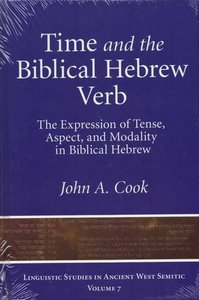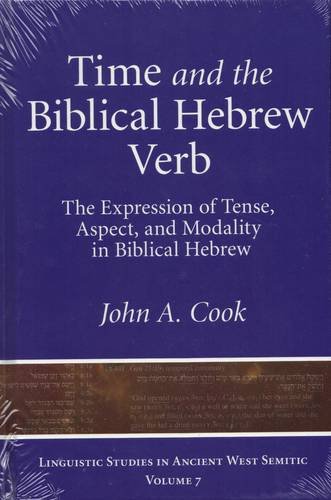Time and the Biblical Hebrew Verb: The Expression of Tense, Aspect, and Modality in Biblical Hebrew by John A. Cook
Ελληνικά, English | 2012 | ISBN: 1575062569 | 384 pages | PDF | 8 MB
Ελληνικά, English | 2012 | ISBN: 1575062569 | 384 pages | PDF | 8 MB
The Biblical Hebrew verbal system continues to exercise scholars, and in this book John Cook interacts with the range of approaches to the perennial questions on the Hebrew verb in a fair-minded approach. Some of his answers may appear deceptively traditional, such as his perfective-imperfective identification of the qatal-yiqtol opposition. However, his approach is distinguished from the traditional approaches by its modern linguistic foundation. One distinguishing sign is his employment of the phrase "aspect prominent" to describe the Biblical Hebrew verbal system. As with almost any of the world's verbal systems, this aspect-prominent system can express a wide range of aspectual, tensed, and modal meanings. In chap. 3, he argues that each of the forms can be semantically identified with a general meaning and that the expressions of specific aspectual, tensed, and modal meanings by each form are explicable with reference to its general meaning.
Methodologically, Cook eschews statistical means of validation, pointing out their weaknesses along the way, and draws on diachronic typology and grammaticalization as an "external" means of validating his theory of the Biblical Hebrew verbal system. These fields have provided a wealth of data on verbal systems and diachronic changes to these systems in the world's languages. For any theory to be valid, it should accord generally with what is known about verbal systems and the ways that they tend to change over time. Given the inescapable diachronic dimension that is part of studying the ancient, composite corpus of the Hebrew Bible, diachronic typology is an especially suitable approach and a particularly useful means of escaping the subjectivity of translation-based statistical approaches.
After a decade of research and creative thinking, the author has come to frame his discussion not with the central question of "Tense or Aspect?" but with the question "What is the range of meaning for a given form, and what sort of contextual factors (syntagm, discourse, etc.) help us to understand this range in relation to a general meaning for the form?" Although the general meaning may be said to be an abstraction (just as a morpheme or phoneme is an abstraction), its usefulness is in giving us a better understanding of the array of specific meanings a form may exhibit and a measure of predictability about the sorts of contexts in which these specific meanings may appear.
In order to account for the contextual character of specific meanings, in chap. 4 Cook addresses long-standing issues involving interaction between the semantics of verbal forms and their discourse pragmatic functions. More importantly, he proposes a theory of discourse modes for Biblical Hebrew. These discourse modes account for various temporal relationships that are found among successive clauses in Biblical Hebrew. Fittingly, his account of this theory of discourse modes ends on an exegetical note with an explication of the interaction of verbs and their discourse context in two passages from the Hebrew Bible.
Cook's brilliant work addresses old questions with a fresh approach that is sure to provoke dialogue and new research.
My nickname - interes



